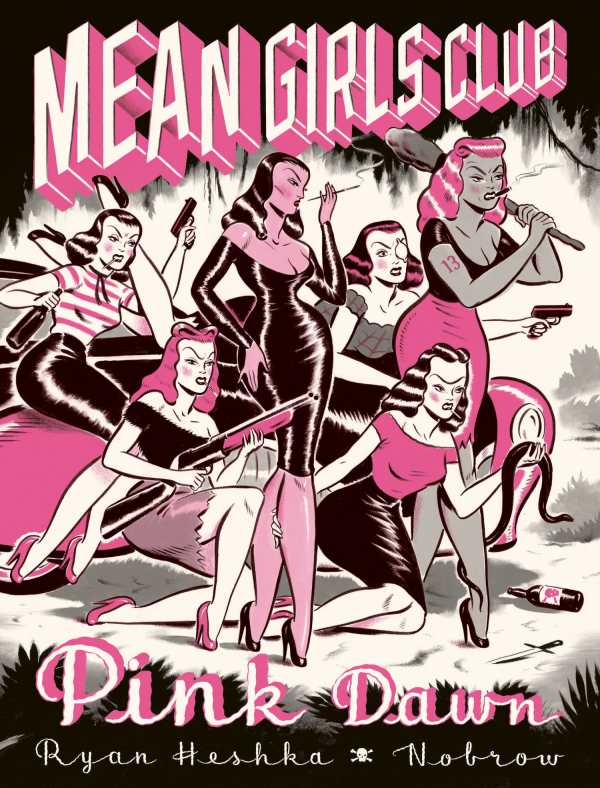
Mean Girls Club
Pink Dawn
Pulpy, hard-living 1950s femmes fatales stand up against the ruling misogynists of their town in Ryan Heshka’s wild and wonderfully drawn graphic novel Mean Girls Club: Pink Dawn.
The Mean Girls Club is a group of young women at war with the local authoritarian, Mayor Schlomo, and his cronies. The women use violence to defend themselves, which Heshka portrays in enjoyably over-the-top methods like tying up corrupt policemen and leaving them to the mercy of black cannibal ants, ravenous mosquitoes, and poisonous bog reptiles—turning the standard woman-in-jeopardy bondage of the 1950s on its head.
There’s also plenty of gunplay and other weaponry on display as the war escalates, and caught in the crossfire is Roxy, a young woman coerced by Mayor Schlomo to join the Mean Girls Club as a spy and to betray them.
Following Heshka’s twenty-four-page Mean Girls Club 2016 release, Pink Dawn allows more space to develop his characters, providing origins for each member of the club while maintaining a rollicking pace throughout. Those origins, along with Schlomo’s nefarious goals and the immoral means by which he pursues them, offer justification for the Mean Girls Club’s own rampage.
Heshka consistently demonstrates his expertise with 1950s slang—some historical, and some invented for this story, usually to humorous effect (alcohol is “the devil’s urine”). Many more vulgar terms are bandied about, often sexual in nature.
Strictly for adults, Mean Girls Club: Pink Dawn is a revenge story that brilliantly subverts the standards of the era it portrays. From the limited color palette to the dialogue to the masterful line art itself, the book bleeds style.
Reviewed by
Peter Dabbene
Disclosure: This article is not an endorsement, but a review. The publisher of this book provided free copies of the book to have their book reviewed by a professional reviewer. No fee was paid by the publisher for this review. Foreword Reviews only recommends books that we love. Foreword Magazine, Inc. is disclosing this in accordance with the Federal Trade Commission’s 16 CFR, Part 255.
